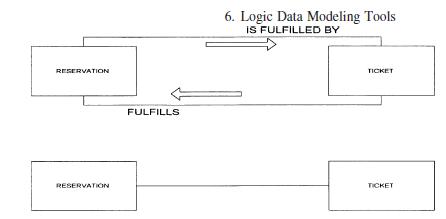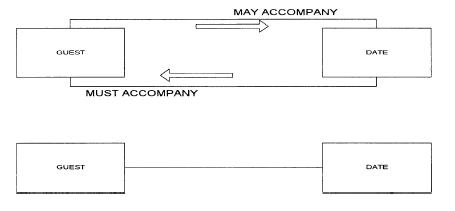Mini-Project #3 Crows-Foot Exercise 1. (a) What is the total number of possible pairings of crows-foot indicators?
Question:
Mini-Project #3 Crow’s-Foot Exercise 1.
(a) What is the total number of possible pairings of crow’s-foot indicators? _____ How many mirror image pairs exist in these possible combinations
(like matching bookends)? _____
(b) How many unique pairs exist? _____ And if you didn’t count the reversed version of each unique pairing, how many are there? _____ Hint: Use this table diagram of crow’s-foot indicators to plot all of the possible instances.

2. Draw the crow’s-foot cardinality for the following situation

A1 Travel takes reservations from clients and provides them with travel arrangements on common carriers throughout the world. For some reservations, tickets are never issued. Reservations can be made and tickets can be issued for them at a later time. Sometimes, when reservations are made one or more tickets are issued simultaneously.
A ticket may fulfill only a single reservation. Tickets, once issued, are never reissued to fulfill anything other than the original reservation.
(3) Draw the crow’s-foot cardinality for the following situation:
The Party Palace is a catering facility that hosts many types of social engagements. One type of event is the dinner party. Guests and their respective dates are normally issued seating cards with table assignments. Every guest will have a seating assignment. Not every guest will have a date. Dates may not be unaccompanied, and they must accompany only one guest.

4. Based on the following business case, draw an entity relation diagram.
You need only to name the entities; no keys or attributes are required.
(a) In the operation of its business, Top-Flight Limo Service records information about drivers who chauffeur the company’s patrons. Drivers must own and drive their own cars. A driver may own more than one vehicle. Top-Flight Limo tracks driver traffic citations during the time of their employment with the company. Drivers begin employment with a clean slate.
(b) In the ERD that you have created, what is the functional significance of “optional” vs. “required” as it is applied to business rules in implementing a database and populating it with data?
Exercise provided by Greg Vimont
Step by Step Answer:

Analysis And Design Of Information Systems
ISBN: 9781846286544
3rd Edition
Authors: Arthur M. Langer




